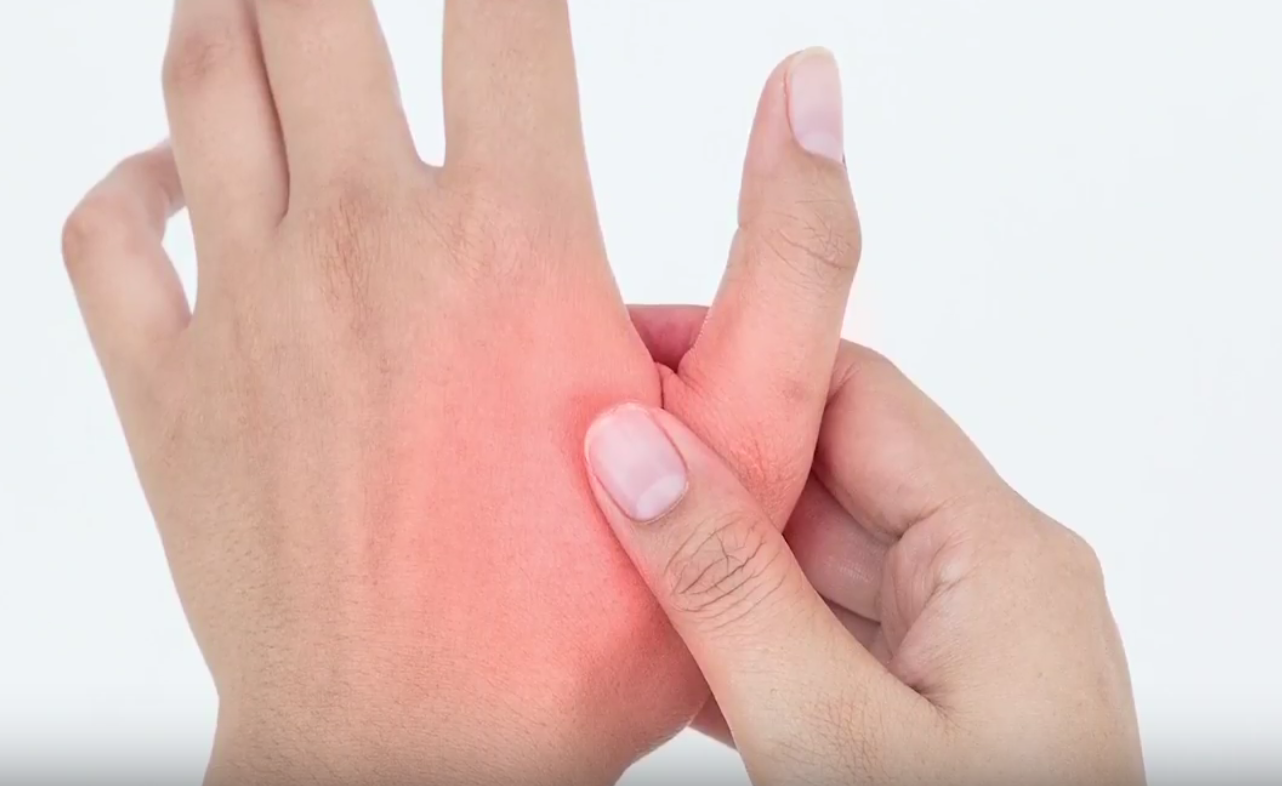What It Is
Thumb arthritis occurs in the joint at the base of the thumb and is a common type of osteoarthritis caused by natural wear and tear of the joint. Thumb arthritis is common with aging and occurs when cartilage wears away from the ends of the bones that form the joint at the base of your thumb.
What Causes Thumb Arthritis?
Thumb arthritis commonly occurs with aging. Previous trauma or injury to the thumb joint also can cause thumb arthritis.
In a normal thumb joint, cartilage covers the ends of the bones — acting as a cushion and allowing the bones to glide smoothly against each other. With thumb arthritis, the cartilage that covers the ends of the bones deteriorates, and its smooth surface roughens. The bones then rub against each other, resulting in friction and joint damage.
The damage to the joint might result in growth of new bone along the sides of the existing bone (bone spurs), which can produce noticeable lumps on your thumb joint.
Common Symptoms of Thumb Arthritis
Thumb arthritis can cause severe pain, swelling, and decreased strength and range of motion, making it difficult to do simple tasks, such as turning doorknobs and opening jars. Treatment generally involves a combination of medication and splints. Severe thumb arthritis might require surgery.
Pain is the first and most common symptom of thumb arthritis. Pain can occur at the base of your thumb when you grip, grasp or pinch an object, or use your thumb to apply force.
Other signs and symptoms might include:
- Swelling, stiffness and tenderness at the base of your thumb
- Decreased strength when pinching or grasping objects
- Decreased range of motion
- Enlarged or bony appearance of the joint at the base of your thumb
As the opposable finger on the hand, the thumb is crucial to the overall mobility and strength of your upper extremity. Our board-certified and fellowship-trained hand surgeon, Dr. Cameron Atkinson explains in the video below the best remedies for Thumb Arthritis.
F.A.Q.
What is thumb arthritis, and what causes it?
Thumb arthritis, also known as basal joint arthritis, is a condition that affects the joint at the base of the thumb. It typically occurs due to the wear and tear of this joint over time. Repetitive movements, genetics, or prior injuries can contribute to its development. Thumb arthritis can cause pain, stiffness, and limited mobility in the thumb.
What are the common symptoms of thumb arthritis?
Common symptoms of thumb arthritis include pain, especially during gripping or pinching motions, swelling at the base of the thumb, weakness in the thumb, and limited range of motion. You may also notice a grinding or clicking sensation in the joint. These symptoms can worsen over time if left untreated.
How is thumb arthritis treated?
Treatment for thumb arthritis varies depending on the severity of the condition. Non-surgical options include splinting, medication for pain and inflammation, and hand therapy exercises to improve strength and flexibility. In some cases, a corticosteroid injection may be recommended. When conservative methods are not effective, surgical options such as joint fusion or joint replacement may be considered. Your orthopedic specialist will determine the most appropriate treatment plan for your specific case.









